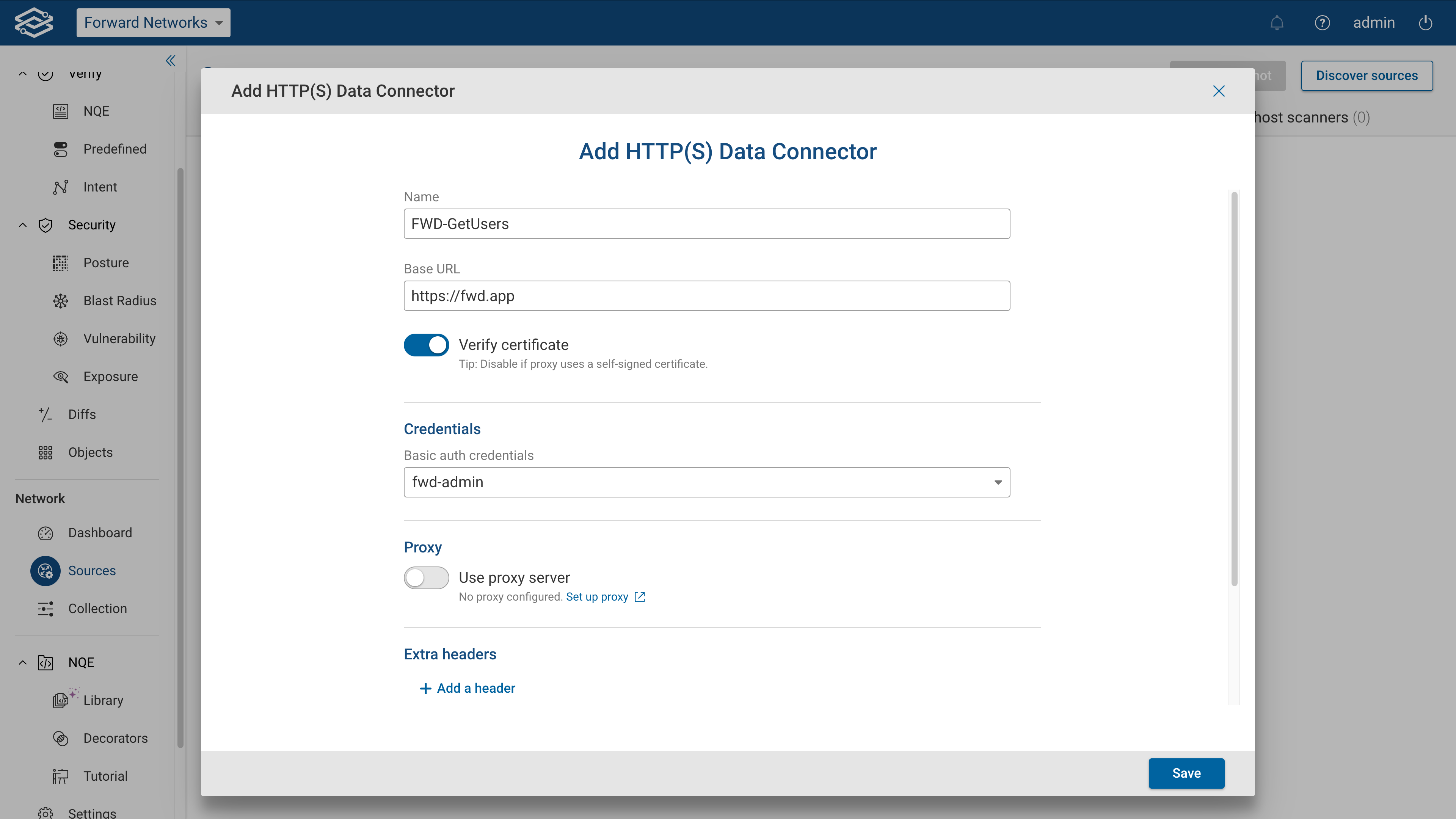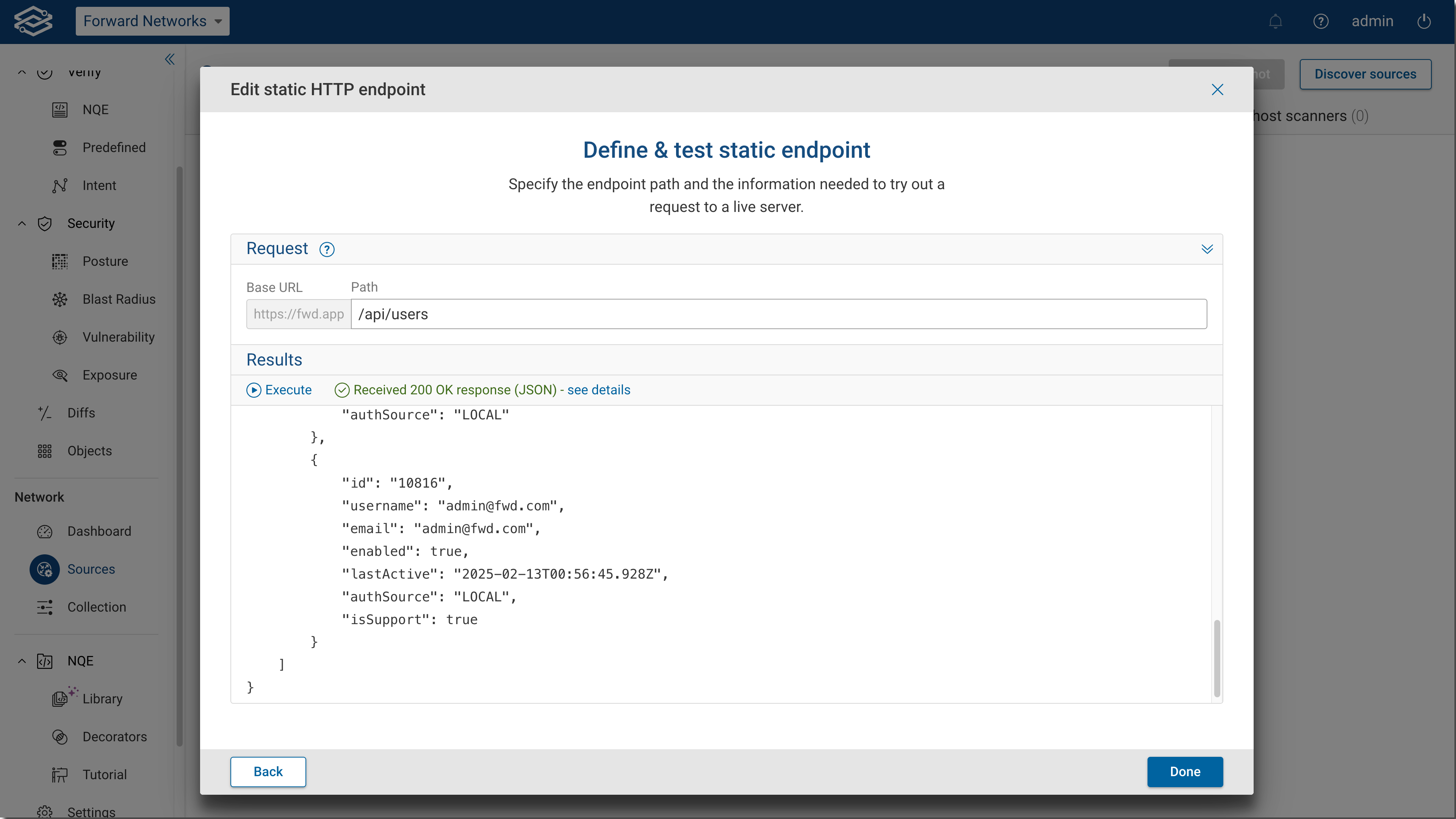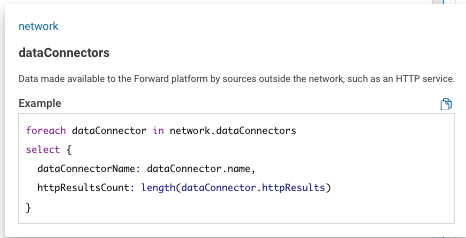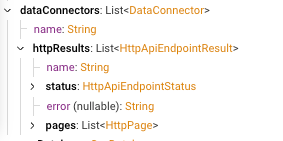I have put together a query to enhance inventory by adding LDoS dates and ‘approved software’. It has greatly improved our Life Cycle Mgmt. conversations. The CSV Files reside separately in a ‘standards’ folder. (there are just too many fields to keep in the same script).
The resulting output provides:
Vendor | Hostname | Model | Location | Vendor LDoS Date | HW Compliance Date | Current OS | Approved OS | Compliance to OS | Replacement Mode | And more
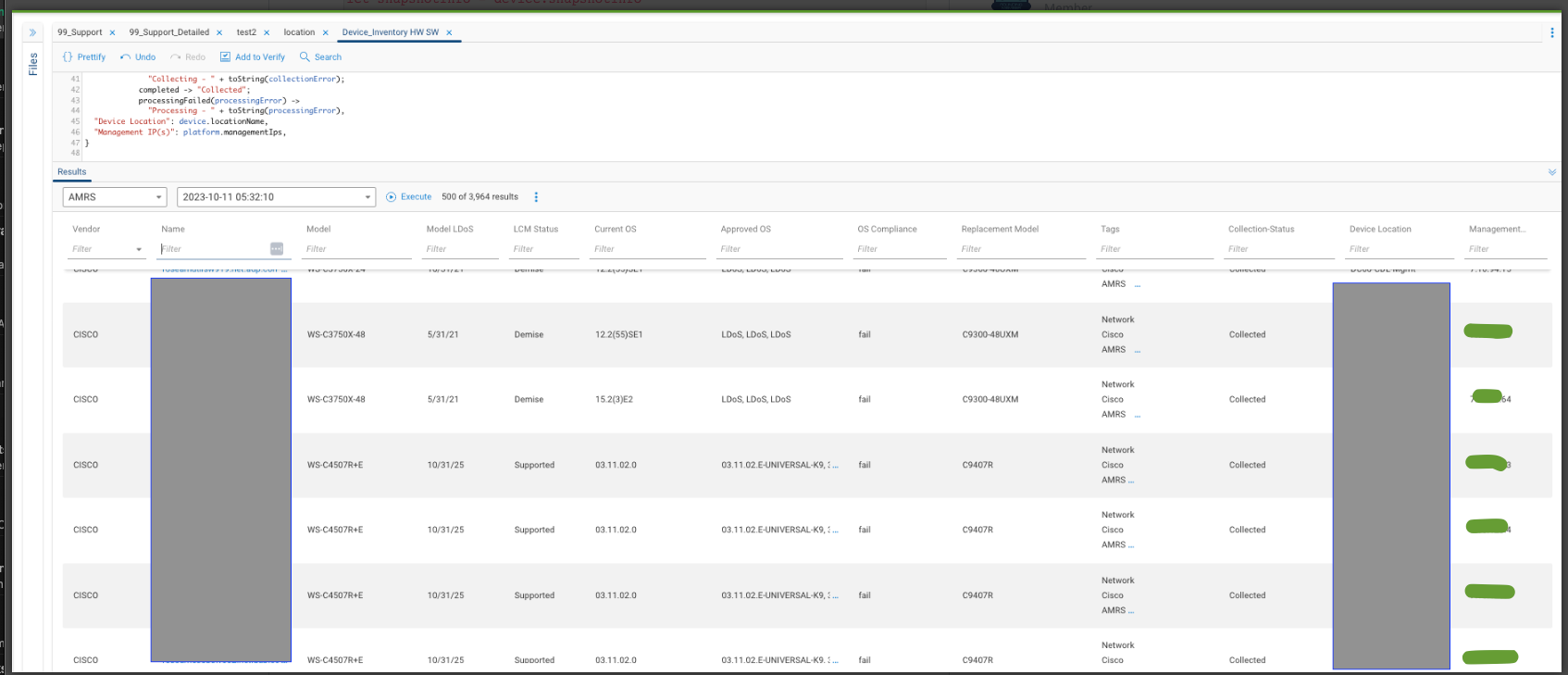
/**
* @intent Get OS Versions of all models and compare to ADP and Vendor Standards
*/
// Get TagName Function - If you put tagnames on objects in forward Networks and you want to pull them out into columns.
// You can define the tags in the export functions below and pull them out as a column. Below you can see the
// Tags in "xxx" that we want to pull - ex ["DC", "CoLo", "Branch", "Cloud", "AWS"]);
// Environment: get_env_from_tags(device.tagNames),
// Region: get_region_from_tags(device.tagNames),
// Function: get_function_from_tags(device.tagNames),
export get_list_match_from_tags(tags: List<String>, expectedValues: List<String>) =
max(foreach v in expectedValues
where v in tags
select v);
export get_env_from_tags(tags: List<String>) =
get_list_match_from_tags(tags, ["DC", "CoLo", "Branch", "Cloud", "AWS"]);
export get_region_from_tags(tags: List<String>) =
get_list_match_from_tags(tags, ["EMEA", "AMRS", "APAC", "LATM"]);
export get_function_from_tags(tags: List<String>) =
get_list_match_from_tags(tags, ["Firewall",
"LB",
"Proxy",
"WLC",
"Router",
"Switch",
"Controller"
]);
//
/**
* @intent Replace OS versions with more appropriate OS version for queries
* @description The goal of this NQE util is to easily allow users to create queries that show
* more appropriate sofware OS numbers, for example removing build numbers
*/
// Get Version Function
pattern_tmos =
```
Sys::Version
Main Package
Product BIG-IP
Version {versionNumber:string}
```;
rSeriesModelRegex = re`^r\d+`;
rSeriesSoftwareRegex = re`(^[^\-]+)`;
removeRSeriesbuild(version) =
foreach match in regexMatches(version, rSeriesSoftwareRegex)
select match.string;
getTMOSVersion(d: Device) =
foreach command in d.outputs.commands
where command.commandType == CommandType.VERSION
let parsed_config = parseConfigBlocks(OS.F5, command.response)
let customVersionNumber = max(foreach match
in blockMatches(parsed_config, pattern_tmos)
select match.data.versionNumber)
select customVersionNumber;
getF5Version(device) =
if hasMatch(device.platform.model, rSeriesModelRegex)
then removeRSeriesbuild(device.platform.osVersion)
else getTMOSVersion(device);
export getVersion(d: Device) =
foreach device in network.devices
where device.name == d.name
select if d.platform.vendor == Vendor.F5
then max(getF5Version(device))
else device.platform.osVersion;
// This is the work around for Nexus to distinguish against ACI and Non-ACI devices`
// cisco Nexus9500 C9508 (8 Slot) Chassis ("Supervisor Module")
NexusPattern = ```
Hardware
cisco Nexus9000 {modelName:string}
```;
getModel(device) =
foreach x in [0]
foreach command in device.outputs.commands
where command.commandType == CommandType.VERSION
let blocks = parseConfigBlocks(OS.NXOS, command.response)
let nexusModel = max(foreach match in blockMatches(blocks, NexusPattern)
select match.data.modelName)
let model = if isPresent(nexusModel)
then join(" ", ["Nexus9000", nexusModel])
else device.platform.model
select model;
//
export Software =
"""csv
VENDOR,ENV,OWNER,MODEL,N+1,N,N-1,N-2,DATE
ARISTA,DC,AristaOwner,DCS-7010T-48,None,4.28.8.1M,4.28.3M,None,1/1/2024
ARISTA,DC,AristaOwner,DCS-7050SX-128-F,None,4.28.8.1M,4.28.3M,None,1/1/2024
ARISTA,DC,NexusOwner,DCS-7050SX-128-R,None,4.28.8.1M,4.28.3M,None,1/1/2024
ARISTA,DC,NexusOwner,DCS-7050SX-64-F,None,4.28.8.1M,4.28.3M,None,1/1/2024
CISCO,CoLo,BranchOwner,CISCO2851,LDOS,12.4(24)T2,LDOS,LDOS,None
Cisco,Branch,BranchOwner,C9130AXI-A,None,17.9.6,None,None,6/25/2025
Cisco,Branch,BranchOwner,C9136I-Z,None,17.9.6,None,None,6/25/2025
CISCO,Branch,BranchOwner,ASR1001-HX,None,17.09.04a,17.09.03a,17.06.04,1/1/2024
CISCO,Branch,BranchOwner,C8300-2N2S-4T2X,None,17.09.05f,17.09.05e,17.09.04a,2/1/2025
CISCO,Branch,BranchOwner,C9300L-48T-4X,None,17.09.06a,17.09.05,17.09.04a,1/1/2024
CISCO,Branch,BranchOwner,C9407R,None,17.09.06a,17.09.05,17.09.04a,1/1/2024
CISCO,DC,FirewallOwner,FPR4K-SM-48S,None,9.18(3)55,9.12(4)10,9.12(3)2,1/1/2024
CISCO,DC,FirewallOwner,WS-SVC-FWM-1,LDOS,3.2(18),LDOS,LDOS,1/1/2024
F5,DC,LB_Owners,BIG-IP i10800,None,17.1.2.1,17.1.1.3,15.1.10.3,1/1/2024
F5,DC,LB_Owners,BIG-IP Tenant,None,17.1.2.1,17.1.1.3,15.1.10.3,1/1/2024
PALO,DC,FirewallOwner,PA-VM,None,11.1.6-h7, 11.1.6-h3,11.1.5-h1,7/8/2025
PALO,DC,FirewallOwner,PA-5450,None,11.1.6-h3,11.1.2-h3,10.1.8-h7,3/17/2025
""";
//
// Original Query
main =
foreach device in network.devices
where device.name == device.system.physicalName ||
device.platform.vendor == Vendor.PALO_ALTO_NETWORKS &&
matches(device.name, "*_vsys1")
// where device.name == device.system.physicalName
where isPresent(device.platform.osVersion)
let os = getVersion(device)
foreach entry in Software
where device.platform.model == entry.MODEL
let OSversion = if device.platform.vendor != Vendor.F5
then toString(device.platform.osVersion)
else max(getVersion(device))
let ModelFix = if device.platform.os == OS.NXOS && !("ACI" in device.tagNames)
then max(getModel(device))
else device.platform.model
foreach entry in Software
where ModelFix == entry.MODEL
// let Software= join(", ", [entry.N_11, entry.N_2])
let approved_sw = join(", ", [entry.N, entry.N_11, entry.N_2])
select {
Vendor: entry.VENDOR,
Environment: get_env_from_tags(device.tagNames),
Region: get_region_from_tags(device.tagNames),
Function: get_function_from_tags(device.tagNames),
Type: device.platform.deviceType,
Name: device.name,
model: ModelFix,
"Current-OS": OSversion,
"Approved OS": approved_sw,
"ADP N Compliance": if OSversion in [entry.N] then "Pass" else "Fail",
"ADP N/N-1/N-2 Compliance": if OSversion in [entry.N, entry.N_11, entry.N_2]
then "Pass"
else "Fail",
// "Prior Versions (n-1 n-2)": Software,
Location: device.locationName,
Tags: device.tagNames,
"Management IP(s)": device.platform.managementIps
};
diffs =
foreach x in [1]
let names = (foreach x in main()
select x.Name)
foreach device in network.devices
where device.name == device.system.physicalName ||
device.platform.vendor == Vendor.PALO_ALTO_NETWORKS &&
matches(device.name, "*_vsys1")
where device.name not in names
select {
name: device.name,
vendor: device.platform.vendor,
version: device.platform.osVersion,
platform: device.platform,
device
};
export analytics_sw_compliance = main();
diffs()
// main()






